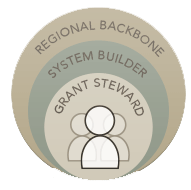As President Obama signed the Workforce Investment Opportunity Act into law Tuesday, Vice-President Biden’s task force also released Ready to Work: Job Driving Training and American Opportunity. The report reflects an across-the-board review of America’s job training programs to ensure they share a single mission: providing workers with the skills they need to secure good jobs that are ready to be filled. Ready to Work identified three consistent themes.
- EMPLOYERS can’t find enough skilled workers to hire for in-demand jobs they must fill to grow their businesses.
- EDUCATION AND TRAINING PROGRAMS need better information on what skills those in-demand jobs require.
- HARD-WORKING AMERICANS,whether studying, looking for work, or wanting better career paths, often aren’t sure what training to pursue and whether jobs will be waiting when they finish.
Among the various case studies and rationale, the report contains a seven-point Job Training Checklist to guide administrative reforms to ensure that what’s working best becomes what all Americans can expect from federally funded employment and training programs. Each of these checklist elements is based on evidence of what’s working, summarized in What Works in Job Training: A Synthesis of the Evidence.
- ENGAGING EMPLOYERS: Work up-front with employers to determine local or regional hiring needs and design training programs that are responsive to those needs.
- EARN AND LEARN: Offer work-based learning opportunities with employers – including on-the-job training, internships and pre-apprenticeships and Registered Apprenticeships – as training paths to employment.
- SMART CHOICES: Make better use of data to drive accountability, inform what programs are offered and what is taught, and offer user-friendly information for job seekers to choose programs and pathways that work for them and are likely to result in jobs.
- MEASUREMENT MATTERS: Measure and evaluate employment and earnings outcomes.
- STEPPING STONES: Promote a seamless progression from one educational stepping stone to another, and across work-based training and education, so individuals’ efforts result in progress.
- OPENING DOORS: Break down barriers to accessing job-driven training and hiring for any American who is willing and able to work, including access to job supports and relevant guidance.
- REGIONAL PARTNERSHIPS: Create regional collaborations among American Job Centers, education institutions, labor, and non-profits.
The U.S. Department of Labor and many workforce development associations are eager to get to work on the opportunities ahead. DOL issued an administrative notice (TEN 5-14), Workforce Innovation and Opportunity Act Announcement and Initial Informational Resources, to get the ball rolling on conference calls, input channels, important deadlines, and more related to implementation.
Local Workforce Investment Boards in Missouri are proactive as well. Five WIBs joined forces to bring together a training event in Branson next week. Diving Into WIOA is slated for July 30-31 featuring Rochelle Daniels.



 Council for Adult and Experiential Learning
Council for Adult and Experiential Learning

